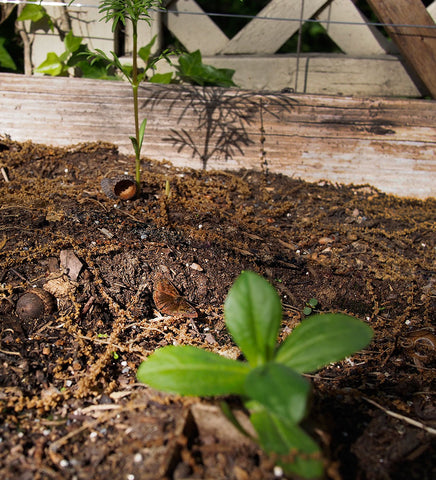No Products in the Cart

Here at My Wonderful Walls, we care a lot about our environment. Like most folks, we want to do what we can to help make the world a better, brighter place. So, we started the Bee Wonderful Project.
Our Bee Wonderful Project began in the Spring of 2016 as a personal endeavor of Michael Goins, the founder of our company. The decline in bee populations, known as “Colony Collapse Disorder” has already had a serious impact on the environment. The truth about the alarming decline in bee populations really hit home when Michael recently took a trip to Honey Island Swamp, near his childhood stomping grounds in New Orleans. Formerly known for their abundant bee population, Michael was stunned to find there are no bees in Honey Island Swamp now. That’s why we decided to take BIG action in helping out some of our little friends - the bees. 
Inspired by Earth Day, we are taking 5% of the proceeds from our Earth Day Sale and putting it toward our Bee Wonderful Project. Join us on our eco-friendly adventure as Michael uploads photos, shares videos and provides updates of the bee-friendly garden and beehives he prepares outside the My Wonderful Walls design studio in Chattanooga, Tennessee.


From fruit, to nuts, to coffee beans, one out of every three mouthfuls of food in the American diet is, in some way, a product of honeybee pollination. So, if you’re nuts about your coffee, you’d better perk up! Bees are dying off at such a rapid rate, our food supply is at serious risk. Here are 7 ways you can help our ‘bee-utiful’ friends:
1. Stop using chemical pesticides: Neonic pesticides are the #1 killer of bees. The best way you can offer immediate assistance to our bee friends as well as other animals and insects, is to stop the use of pesticides all-together! Did you know when you use pesticides they make their way through the entire plant? That means if you use pesticides on your veggie garden, you are not only killing off pollinating insects, like bees, but you are consuming pesticides yourself and putting your own health at serious risk. *Tip: If your garden is in need of pesticides, try organic pesticides and natural insect deterrents like an herb garden, or night blooming flowers to attract bats - known as mother nature’s organic pest control.
2. Practice leave-it-alone gardening: Think about your garden as a habitat for wildlife, rather than a perfectly manicured lawn. Not only is it easier to maintain this type of garden because of the super low maintenance, but it’s also bee-friendly! *Tip from scientist Sylvia Fallon at NRDC’s Land and Wildlife Program.
3. Grow local: You don’t need those fancy-schmancy hybrids you find at plant nurseries to have a bee-utiful garden! They may look pretty, but most of them have the pollen, nectar, and even the scent bred out of them - which isn’t good for our bee friends. *Tip: To find out which bee and insect friendly native plants will work best in your area, visit the Xerces Society.
4. Grow wild: Plant native breeds of all shapes and colors that will bloom from early spring to early fall to attract bees, and butterflies alike! *Tip: Planting in clumps rather than individual flowers or plants will make it easier for our pollinating friends to find you! Also, Milkweed is a particular favorite of the Monarch butterfly.
5. Bee a smart shopper: When shopping for seeds to plant in your garden avoid any and all products that say “protected”. A product with this label means the plants and/or seeds have been chemically pre-treated with pesticides. *Tip: The best way to get seeds for your garden is to buy from organic local farmers, or smaller plant nurseries that specialize in organic gardening.
6. H2O will help them grow: It’s getting warmer outside and bees need cooling off too! Especially in drier climates. If you have a bird bath or a small bowl, fill it with a few pebbles and some fresh water. This will help the bees stay cool and hydrated so they can do their pollinating magic. *Tip: Keep fresh water on hand and change out daily to prevent mosquitoes from nesting.
7. Bee Brave: If you really want to get involved and help the bees in a BIG way, learn how to be a beekeeper! To get started, you can purchase a pre-made “bee box” at your local hardware store or farmer's supply store. Bees also make their homes from fallen branches and trees, so if you have a fallen tree branch on your property, drilling a few bee-inviting holes in the deadwood makes a perfect home for our high flying friends. This is one of the best ways to repopulate the bees and help save our environment. *Tip: For more information check out this inspiring video by Kirby Engleman, as she charms the beekeeper inside all of us.
We hope you’ll follow our journey and do your part to bee wonderful along with us!